“After twenty-six years, I finally realized, I dress really queer.”
My notes from my visit to the museum today are a complete mess.
I spent the better part of two hours hungrily devouring each detail on 100 exquisite ensembles spanning three centuries of mollies, macaronis, dandies, dykes, leather daddies, Aesthetics, Sapphics, Mattachines, Cockettes, lumberjack goddesses, drag queens, and Dandy Rasputins. Hours later, I feel not unlike a Roman at a feast/orgy: full to bursting and ready to vomit it up and consume all the more.
Too graphic? Too bad, this is queer fashion, people!
I wish I could show you my own photos, but a terrifying goblin of a security guard growled “NO PICTURES” in my general direction as I tried to attempt to take them for you. I failed you all.
I challenge you all to think back to your childhood, youth, young adulthood, last Friday night, whatever is the queerest ensemble in your memory. Now take that outfit, add leather, sequins, a codpiece, ruched conical breasts, an old bed sheet, shoulder pads, a corset, a red velvet cape, a top hat, and clear plastic platform shoes. That is an outfit on display at FIT right now, except it’s from the year 1897.
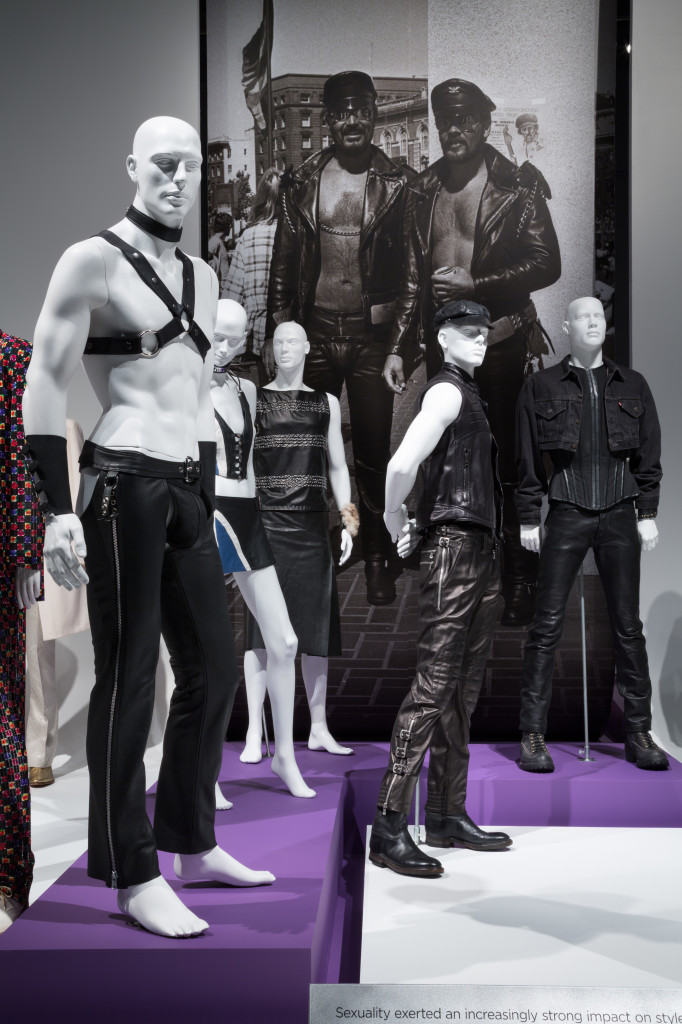
I was accompanied on my visit by a thoughtful FIT student, Veronica Romero. She pointed out the relational nature of the ebb and flow, the attraction and revulsion, between queer and normative fashion trends. Take the evolution of menswear: In the 18th century pastels, brocade, floral, ruffles, bows, and lace were perfectly normal flourishes on male garments. Then, as these trappings were popularized amongst the infamous mollies and macaronis (assumedly gay and effeminate men who would hang out in inns together looking fantastic no doubt) then the heteros renounced their feathered hats and velvet breeches. Thus drab, monochromatic, rough, boxy, minimal, utilitarian menswear was born out of a desire to avoid looking too queer. Only 150 years later.
Fantastic queer portrait photographer Molly Landreth, in an interview with James Saslow at CLAGS, quoted another public artist in saying that “what you see changes who you are.” I agree with this statement wholeheartedly, and would also add that “what you wear changes who you are” and vice versa. Queers like us used to have to be a lot more careful about the ways we expressed ourselves, and yet past generations did so with intricate and meaningful detail, sometimes risking their lives. Seeing queer fashion, along with the helpful explanatory descriptions, quotes, and historical context for each outfit, makes that urgency, secrecy, flamboyancy and camp tangible for a generation who has for the most part enjoyed freedom of expression through their clothing choice.
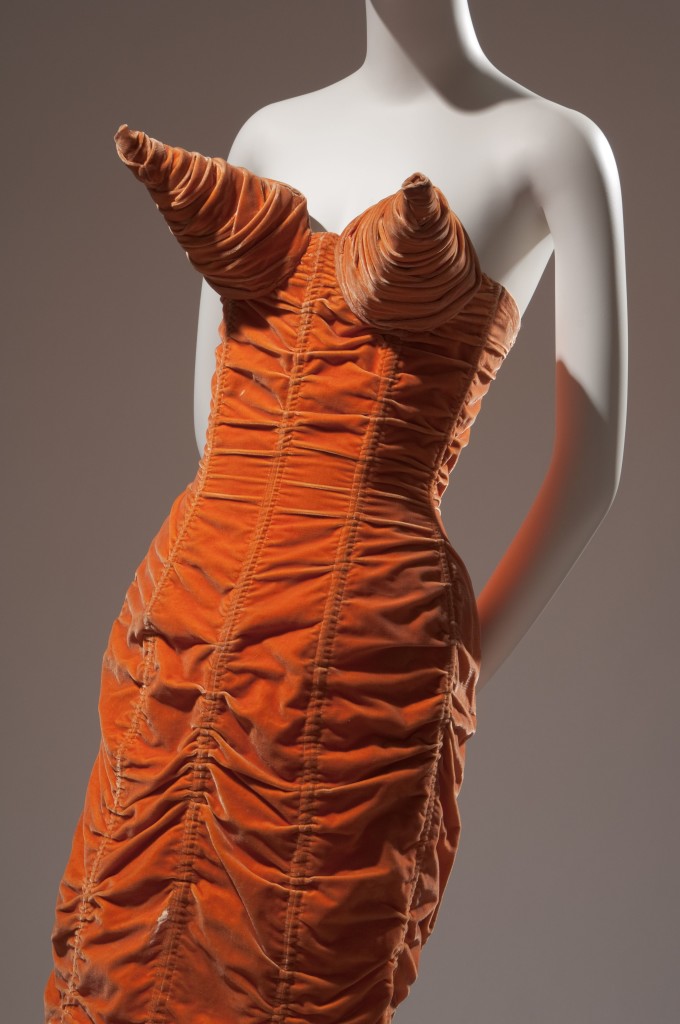
Which is not to say we weren’t, and maybe still are, mocked for our weird aesthetics. I know I was. I was surprised to find that visiting this exhibition brought up a lot of old memories for me, shopping for and wearing clothes that were totally unconventional, highly disturbing (especially to my mother) and to me as necessary as food or air.
The thing about queer fashion is, it isn’t trends and runways, and supermodels and capitalism: it is a subconscious and undeniable urge to let the world see externally that you are truly living in a different and non-conforming reality. It’s a compulsion to make yourself look more like a character that fits in the prism through which you view everything around you.
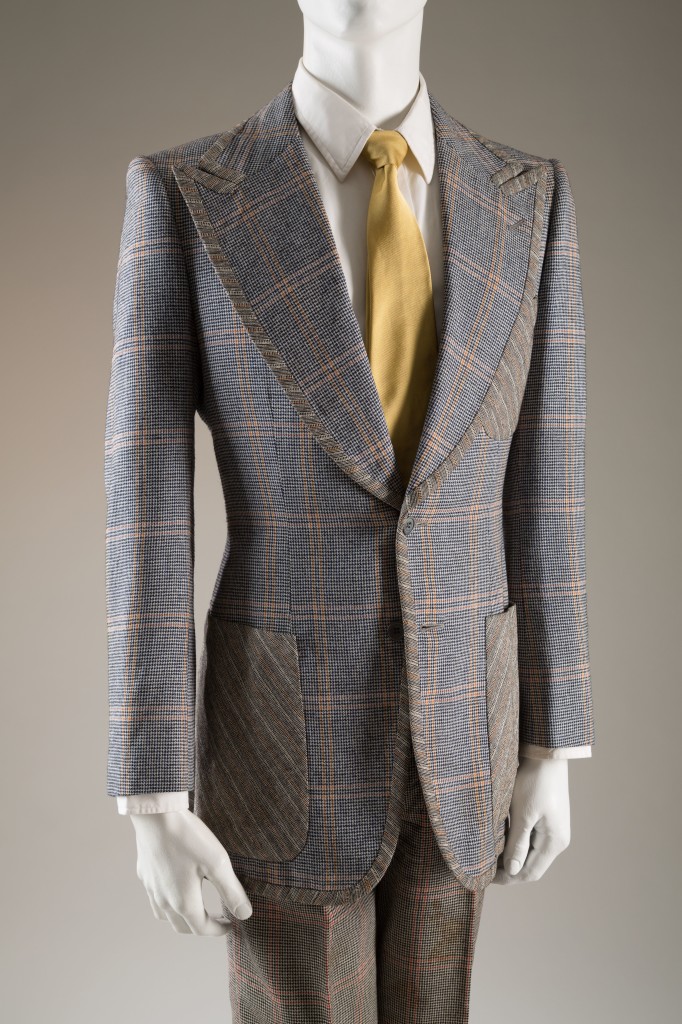
Which of course brings me to my criticism. No review would be complete without out someone (me) demanding something potentially totally unfeasible from a body of work that they (I) have no real ground on which to criticize.
Now, if I had my druthers, I would have brought a few more diverse perspectives into this exhibition. Of course I understand that it is easier to find beautiful couture outfits made by Gianni Versace for Hal Rubenstein and pristine examples of the fabulous suits of Marlene Dietrich. These are a feast for my eyes and inspiration for my own wardrobe, which is paltry and dim in comparison. BUT I left FIT with a burning question about more street style, subversive fashion choices, and the ways that queer people across the world found and find ways to express themselves through their style of dress. What clothes did Sappho wear on Lesbos in 600 BCE? What was the wedding dress of Emperor Nero’s husbands in the year 54 CE? What were the robes of Anastasia the Patrician, who lived her life disguised as a man in a monastery in Alexandria in the 6th century CE? What did da Vinci wear when on trial for sodomy? What do queers in indigenous societies do to show off their preferences and identities? What do Chinese hipsters wear to gay clubs?
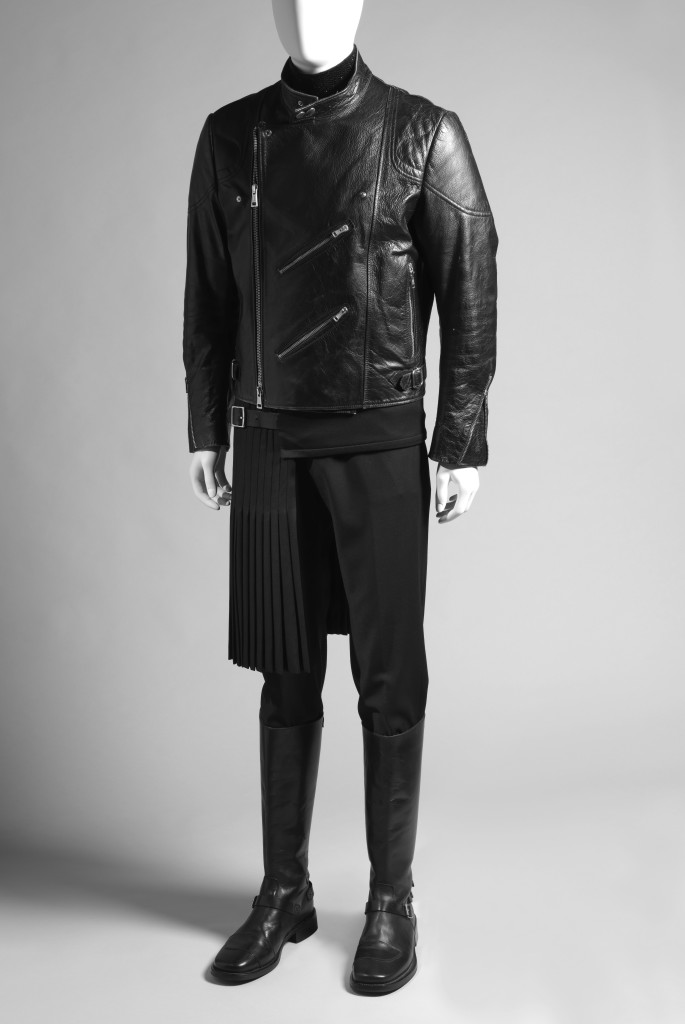
Also, way too many white gay cis-gendered men featured, who mostly cater to (or shape) the tastes of rich white hetero ladies anyway. We get it! Couture designers are very gay! Tell me something I don’t know.
But, those criticisms taken with a grain of salt, I applaud FIT for amassing a truly impressive selection of truly astoundingly beautiful and telling examples of queer self-expression through the art of apparel.
But let us take pictures next time!
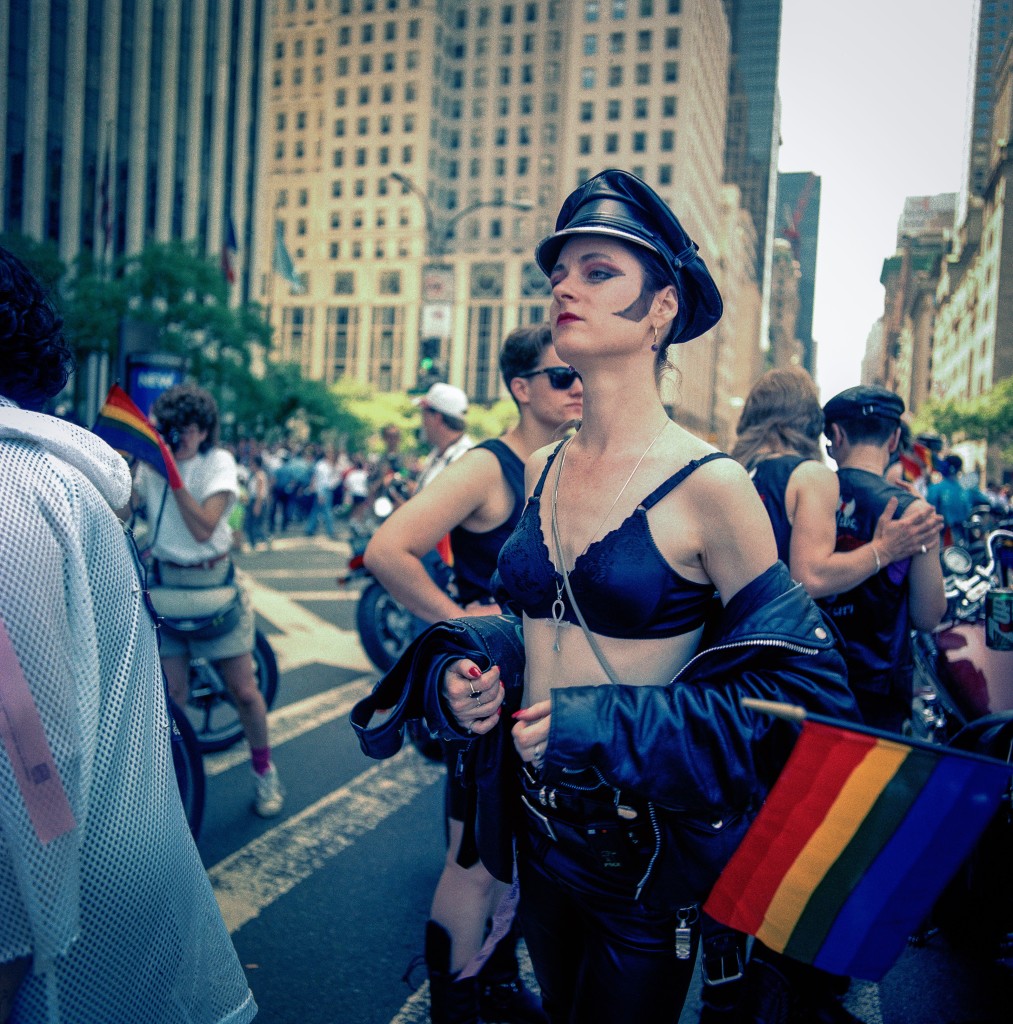
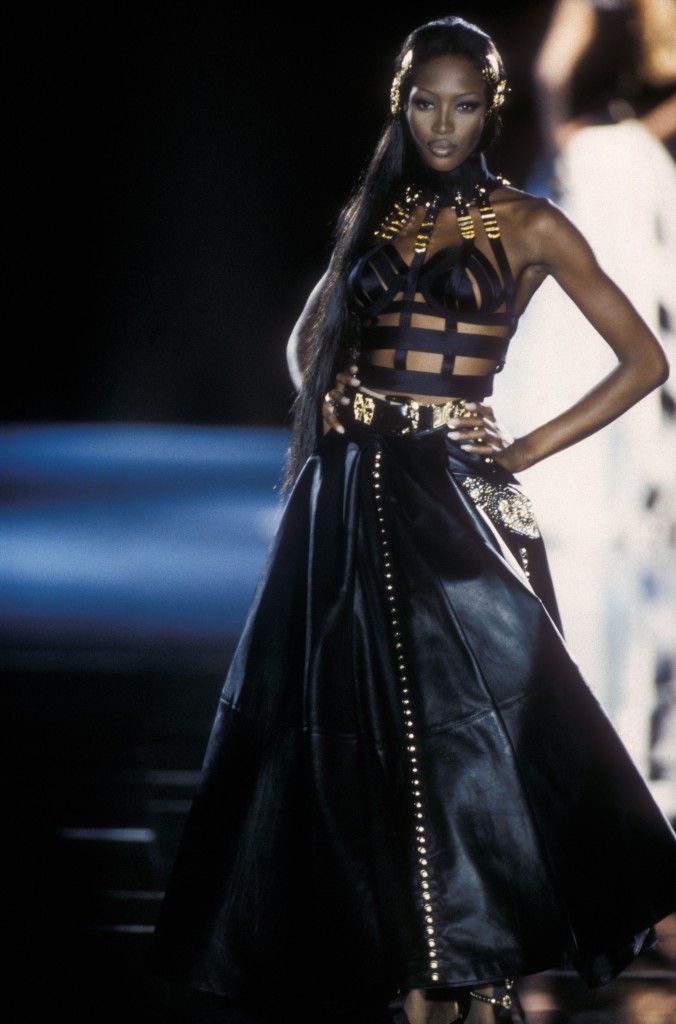
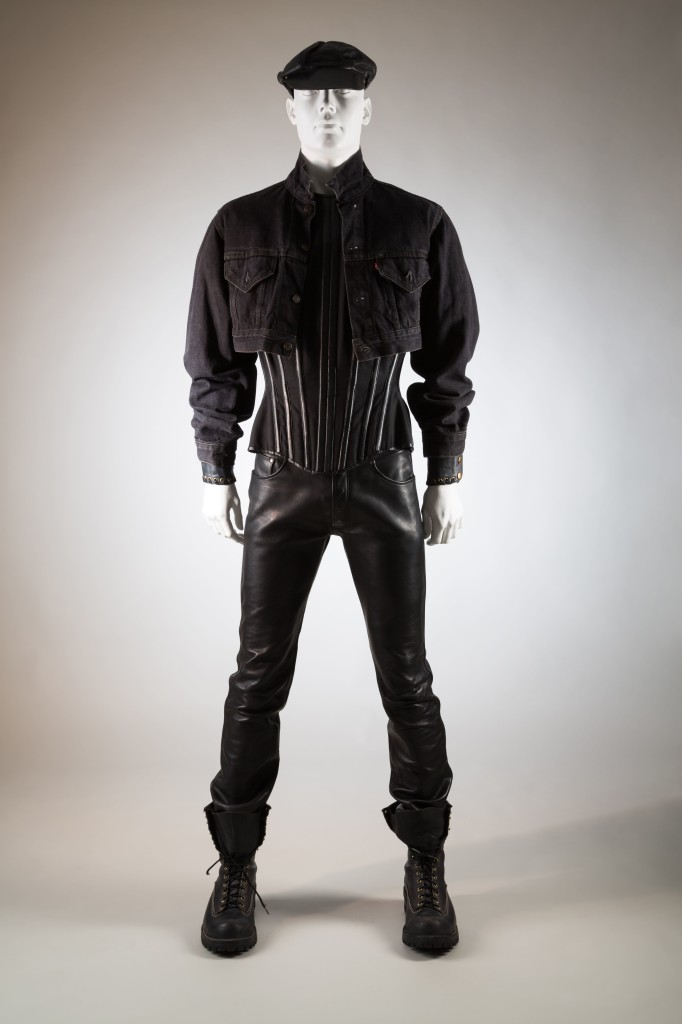
FIT’s A Queer History of Fashion is located in the Special Exhibitions Gallery and is on display until January 4, 2014.
Visit FIT’s website for more information.
Related article: “What is Queer Fashion?”: A filmed discussion with Anita from dapperQ and Sonny from Qwear

